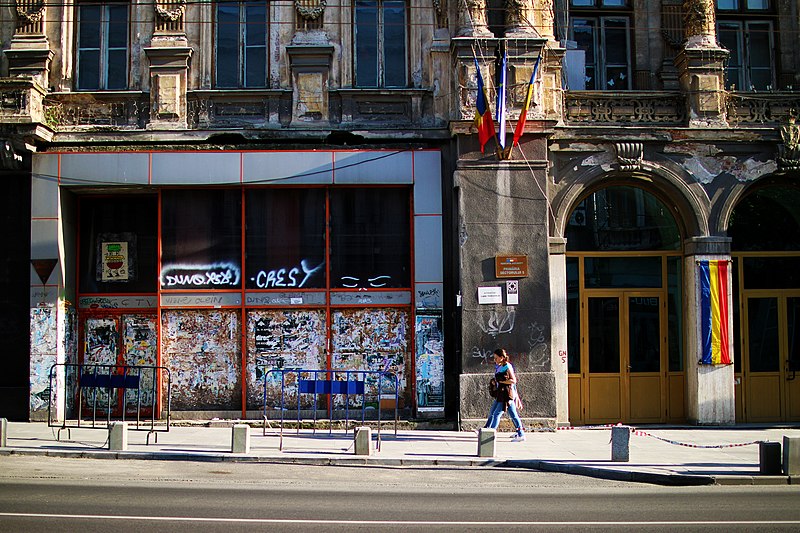COVID-19’s Impact on Romania

Romania is one of the most impoverished countries in the European Union. As of 2018, the country had the highest poverty rate in the union, with more than a quarter of the population living on less than $5.50 per day. Poverty has a high concentration in Romania’s rural areas, which contain most of the poverty-stricken population. The COVID-19 pandemic reached Romania relatively late compared to the rest of the European Union. The country identified its first case on February 26, 2020. COVID-19’s impact on Romania was mostly negative, lowering life expectancy and highlighting health care and medical supply disparities. A COVID-19 vaccine campaign began swiftly in Romania, yet momentum was not consistent. Lack of infrastructure for proper vaccine distribution and widespread vaccine misinformation have slowed vaccination rates. As of May 2022, around 43% of the country is fully vaccinated, the second-lowest amount among EU countries.
Government Response
At the pandemic’s start, the Romanian government promptly took measures to combat the COVID-19 pandemic. On March 16, 2020, Romanian president Klaus Iohannis declared a state of emergency and on March 25, the government announced a lockdown. Nearly a month later, on April 14, Romanian authorities extended a 30-day lockdown that lasted until May 14. These actions did not come without backlash – a Romanian citizen even presented a case in protest of the 30-day lockdown to the European Court of Human Rights.
The Romanian government quickly put in motion Romania’s COVID-19 vaccination strategy. According to OECD, the campaign showed priority toward medical workers, putting high-risk members of the population second. The military and certain intelligence services, including the Special Transmission Service, stepped in to help distribute the vaccine.
Vaccination rates started strong. According to Euronews, Romania was among the top three European countries with the highest rates at the beginning of 2021 but fell from grace as numbers began to decline in March of the same year. Vaccine misinformation ran rampant and discouraged citizens from receiving any doses, Euronews reports. The rural areas of Romania lack infrastructure; social services, employment opportunities and health care are hard to find. Due to this, the majority of Romania’s poor are unvaccinated. In response, the European Commission joined Romania in the communication of the vaccination campaign: 40-second videos and 20-second radio ads promoting the vaccine were played on television and radio stations, respectively.
Impact on Health Care System
Battling the COVID-19 pandemic has exposed flaws in the Romanian health care system and led to innovation. The Ministry of Health and the National Health Insurance Fund entirely pay unconditional coverage for COVID-19, according to OECD. Still, not every Romanian citizen has equal access to COVID-19 care. Rural areas are lacking not only health but also general infrastructure and have difficulty benefitting from Ministry of Health actions.
A positive side of COVID-19’s impact on Romania is the creation of multiple online systems to manage health information, which gives more people access to their health data, OECD reported. Additionally, the Romanian government used the European Union’s digital COVID certificate, which is used nationwide to certify whether an individual has been vaccinated, tested negative or recovered from COVID-19.
Again, these benefits of COVID-19’s impact are more present in urban areas of Romania, as around 73% of Romania’s rural areas have access to the internet, while the rate is 87% in urban areas.
Businesses and Workers
Similar to the Ministry of Health, the Romanian government was proactive in enacting policies to support small businesses and workers during the pandemic. It ensured that the financial status of the employer does not affect the employees’ wages, including multiple workplace health and safety measures. The government also released €1 billion in EU grants to benefit Romanian businesses that the pandemic impacted and extended the technical unemployment period from 30 days to a 90-day minimum.
Regardless of the measures that the government enacted, the pandemic caused an increase in unemployment. Business and working families in rural areas of Romania suffered significantly. In Galați County, registered unemployment rose from 10,414 in 2020 to 11,856 in 2021.
Although COVID-19’s impact on Romania took a significant toll on the country, especially its poor, it led to several instances of innovation and swift, beneficial government response.
– Sophie Buibas
Photo: Wikimedia Commons
